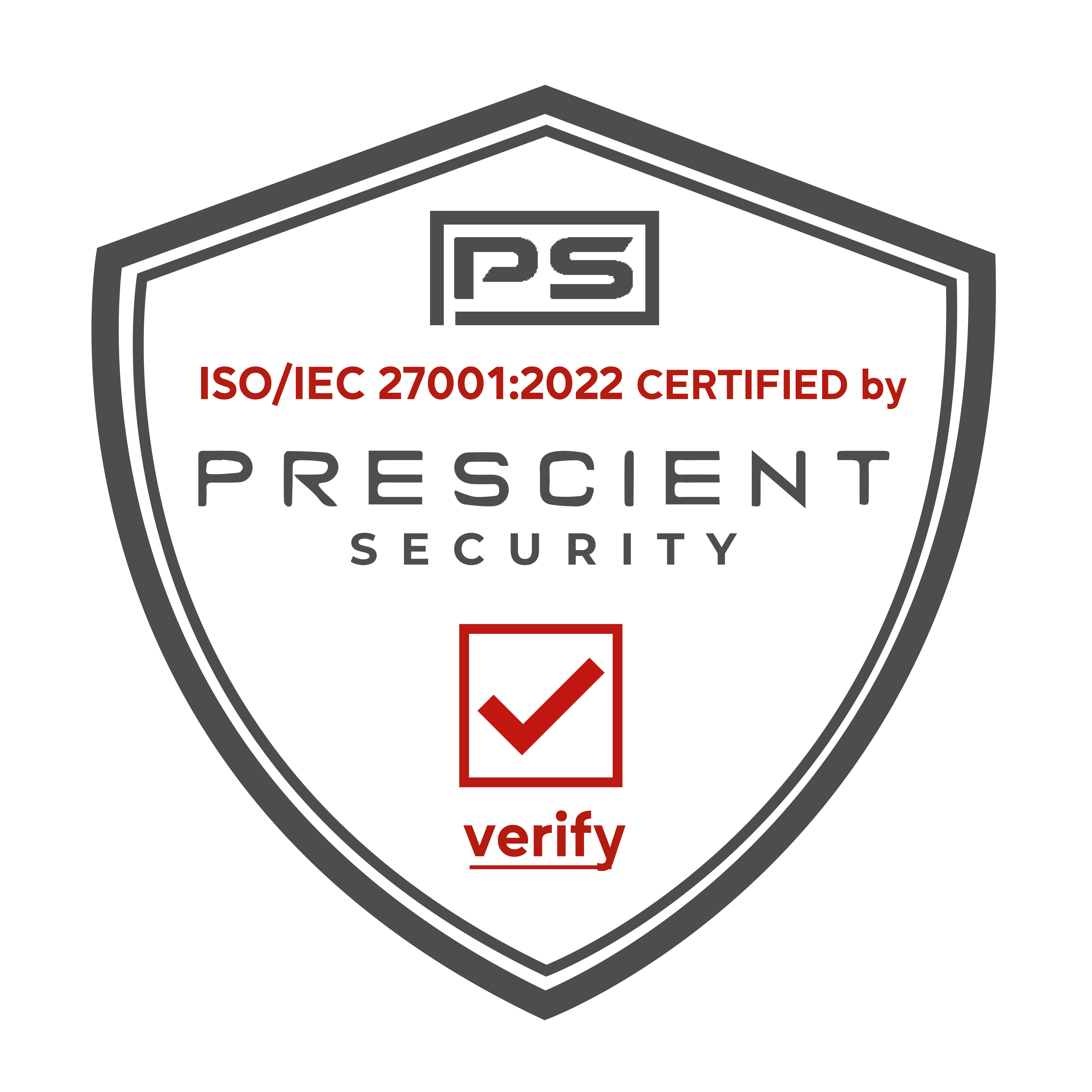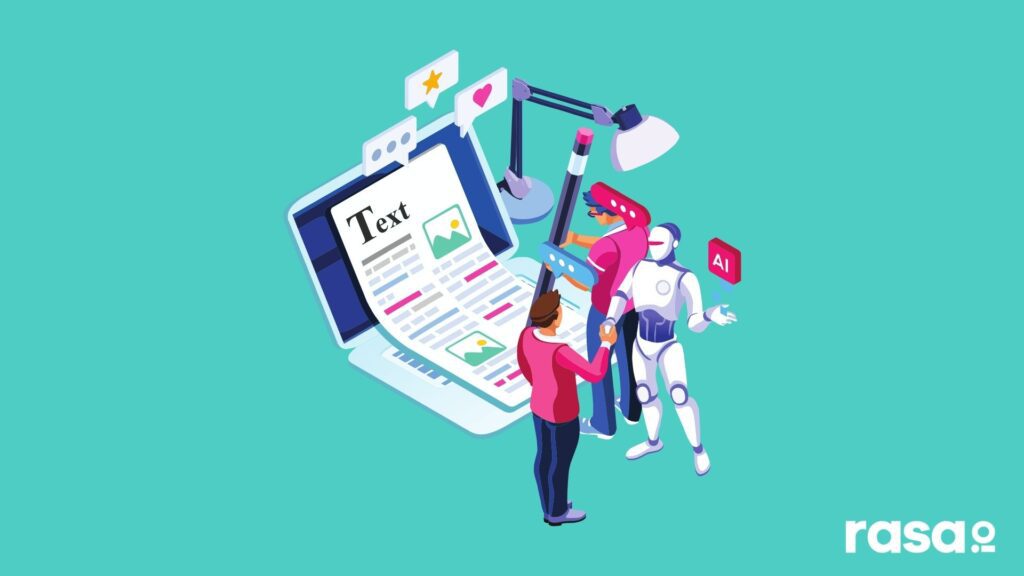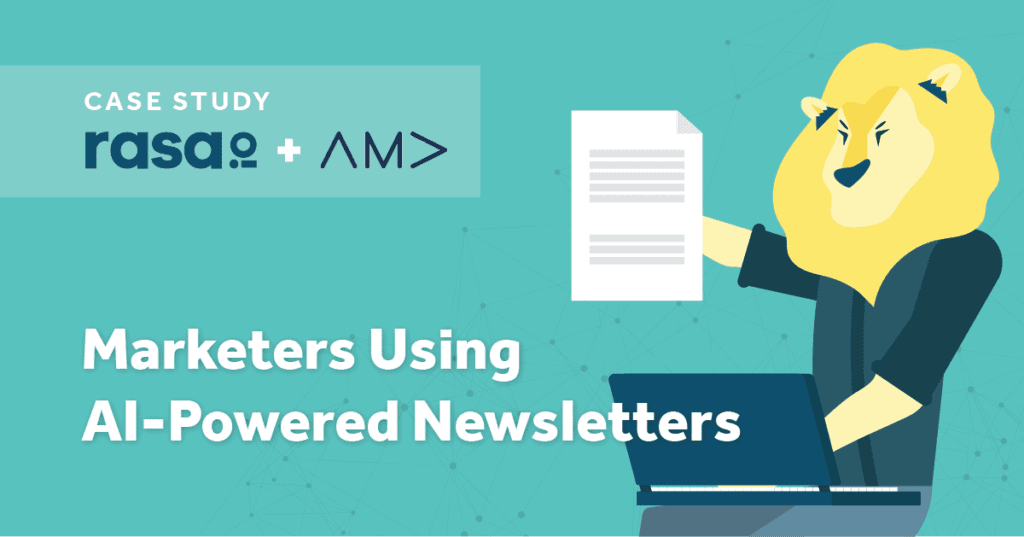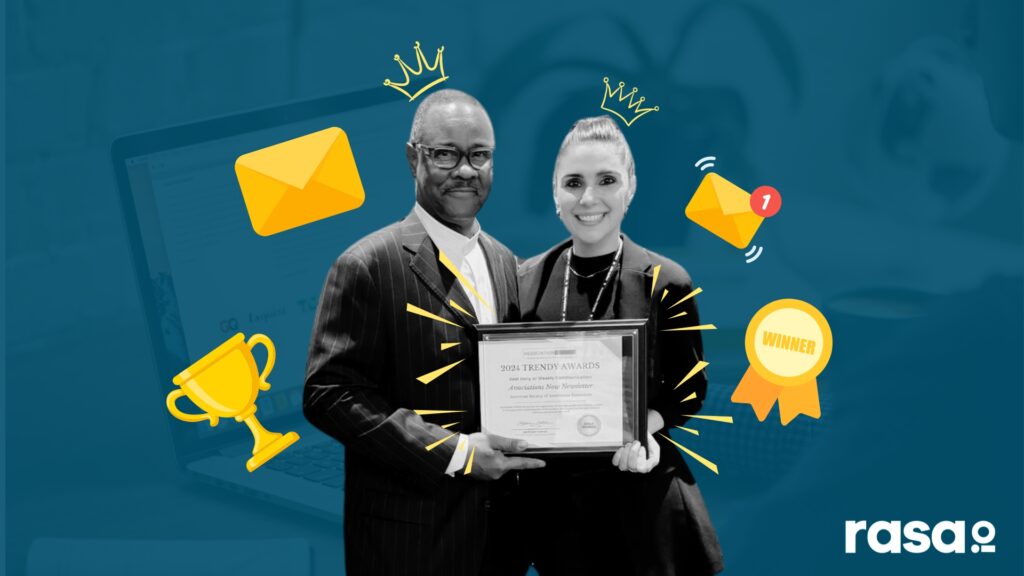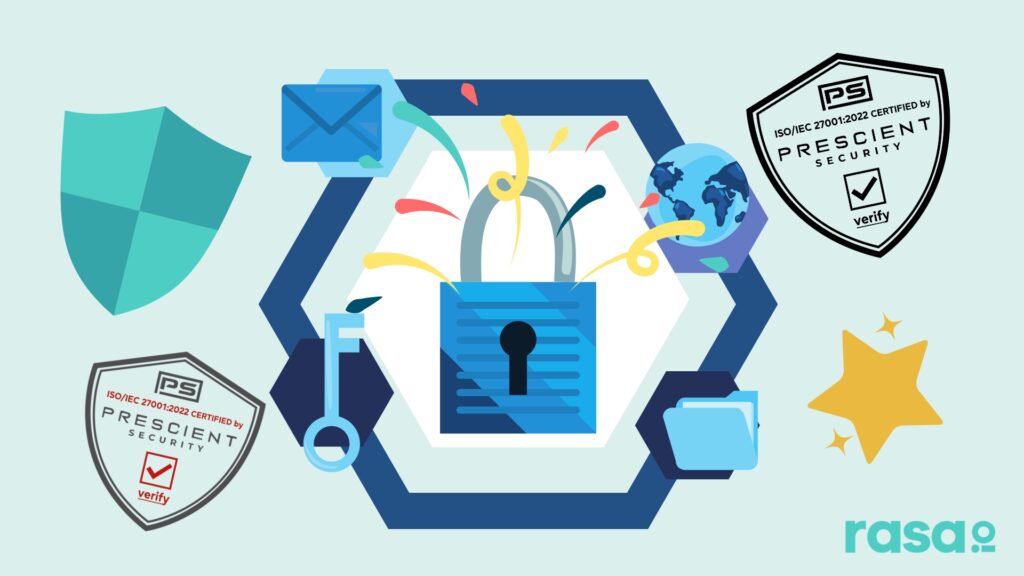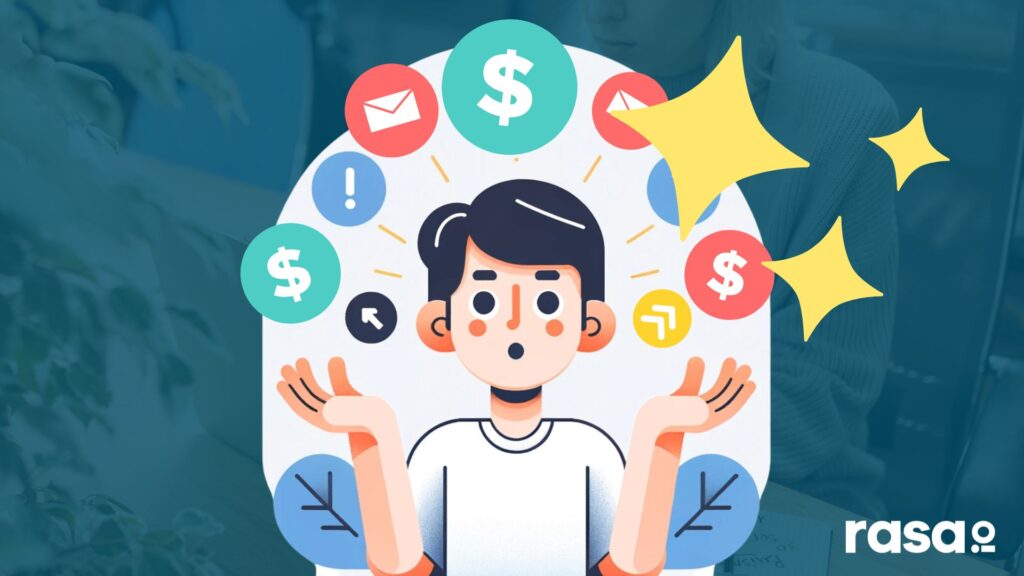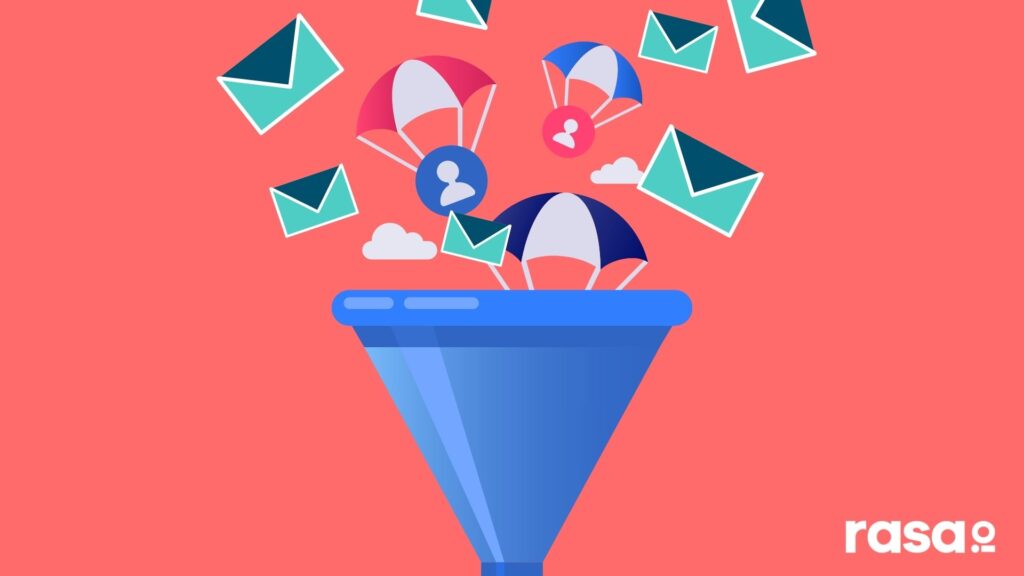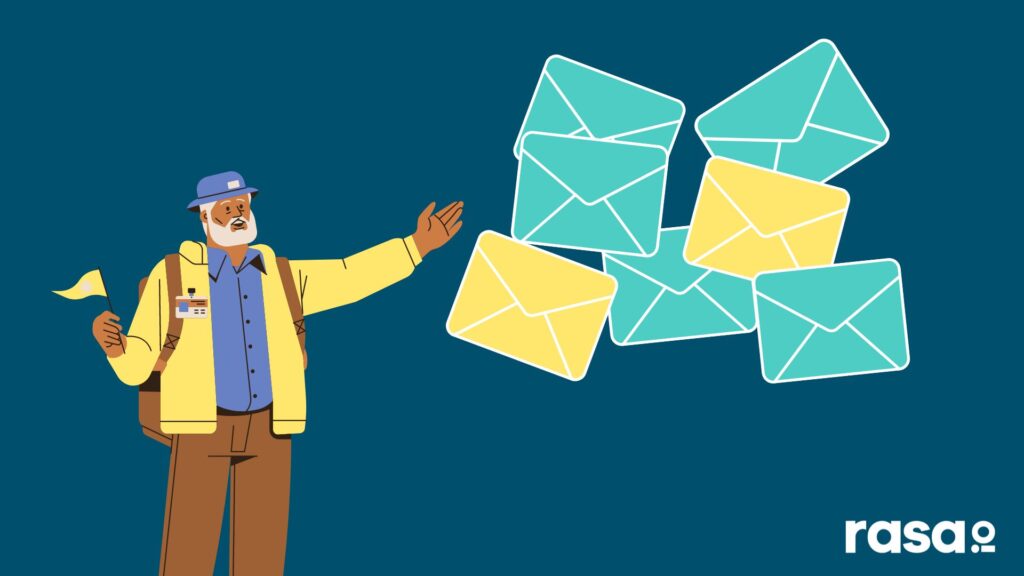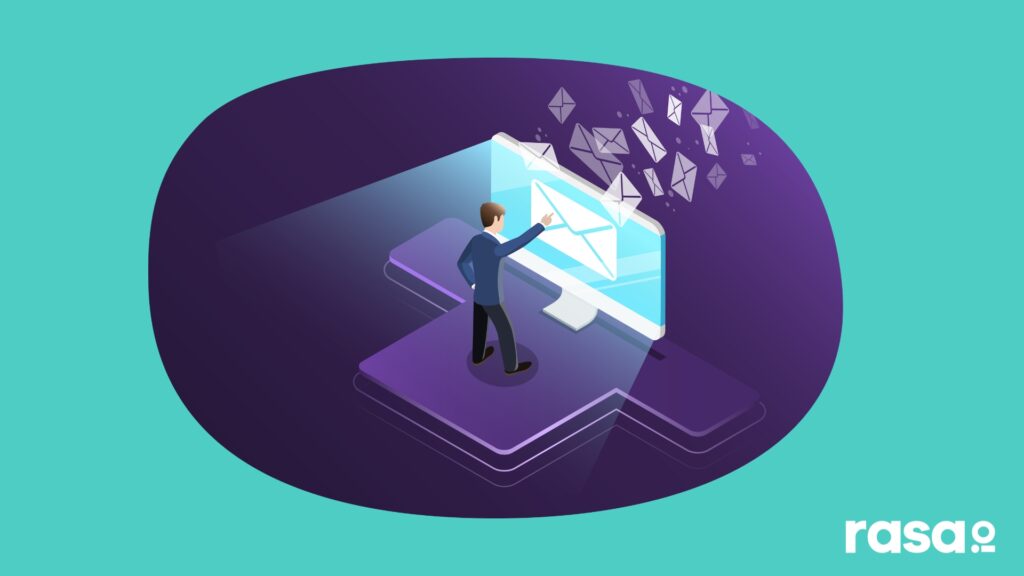Jackie Bledsoe
How one author and speaker considers himself an email marketer above everything else. This is Jackie Bledsoe’s story about Pushing Send.
Jackie Bledsoe is an author, blogger, speaker and podcaster. His work has been featured in publications like The Huffington Post, The Good Men Project, Disney’s Babble, as well as HomeLife and ParentLife Magazines. He is also incredibly proud of his work as a husband and father who encourages men to better lead and love their families.
Key Points From This Episode:
- Jackie wishes he began collecting emails sooner to build his list and can see a connection between his flow of business and how that relies upon on his commitment to email.
- He has found that his off-the-cuff emails do the best, even only publishing weekly.
- Everyone who joins Jackie’s list goes through a welcome or indoctrination series.
- Watching others, listening to them and trying to emulate successful marketers is how Jackie learned how to grow his business using email.
- He was blown away by the power of email after doing his first campaign based on a series of emails.
- Jackie writes his emails like he is speaking to one person and he has seen powerful connection with the people he is serving.
- He believes email marketing has been a main engine to open the doors for writing books, speaking on stage and launching products that change lives.
- Being consistent and authentic is what Jackie says has really created a solid connection with his audience no matter where he is writing.
Tweetables:
“I can say that our business has ebbed and flowed based on my level of commitment to communicating via email to our audience.” – @jbledsoejr
“How can I most effectively do this? What is it? How do I do it? What can I test? And it kind of started from there. It was no big aha moment. I just started watching others, listen to them, and trying to emulate what they were doing.” – @jbledsoejr
“Getting somebody to sign up, sitting in writing an email that actually got engagement, and then getting write in an email that ended up with money in my bank account.” – @jbledsoejr
“It was just amazing to me how people, once they allowed me into their inbox, now allow me into their world by being transparent, sharing their troubles, their successes.” – @jbledsoejr
“The power of building a business with email marketing as one of its main engines, you know, it’s opened the door for us, to write books and speak on stages and launch products and impact lives.” – @jbledsoejr
“Being consistent with them every week, me being authentic, makes them turn around and write those emails that are very transparent and open that they probably, they wouldn’t put on a Facebook post comment stream.” – @jbledsoejr
Links Mentioned in Today’s Episode:
Episode Transcript
Jackie Bledsoe:
Here’s how I became an author is because I built a platform and I learned to use email to do it, but it happens on a regular basis and it’s not always directly related to email because most people don’t realize that email is that engine underneath a lot of what we do. But my conversation goes to that authors always come, like, how did you do that? How did you become a speaker? I was like, without this email list, I’m not, you know, or at least not at this level, I’m just trying to get self-published and maybe get a few people to read my book, but with the engine and the power of email marketing, doors are open. So if you want to do this, if you want to do what I’ve done, here’s one of the things that you need to embrace.
Bryan Kelly:
From rasa.io, the tool for sending smarter and better email newsletters. This is Pushing Send, a show, featuring people who send emails, their subscribers actually want to read. I’m Bryan Kelly and on today’s show why one author and speaker considers himself an email marketer above everything else. Here’s Jackie Bledsoe explaining this to me. How important has email been for you?
Jackie Bledsoe:
Oh, it, it has been probably one of the, if not the most important aspect of it, as I think about it, sometimes people ask me what I do. I say I’m more of an email marketer than I am an author or a writer, but no, that comes into it. But it’s funny because when I first started as everything that I’m doing online right now, and our business now started with a personal blog and I was not collecting emails. Really didn’t know anything about it. And I kind of learned about it and was still slow to get started. And I say this to myself every day and almost everybody I talked to that did the same thing. Say the exact same thing is I wish I would have started sooner rather than later collecting emails and writing emails to build a list and engage our audience. I waited probably year and a half, maybe two years before I really started and, probably another year before I really started to get into it, study it and really utilize it. So it’s very important. And I can say that our business has ebbed and flowed based on my level of commitment to communicating via email to our audience.
Bryan Kelly:
Yeah, I totally believe it. So what’s the typical cadence you send out emails to your list.
Jackie Bledsoe:
Yeah, it’s fluctuated over the years now it’s a weekly basis. And when I first started creating content blog form, I was writing a new post every day. So, and this was like for several months, I wasn’t emailing at that time. Then later when I started the email, I believe I was sometimes communicating two or three times a week via email. Then I dropped that down and then I honestly got non-existent to my audience. And when I came back to speak to them, they were like, who are you? Literally, I got emails. I sent out a survey and said, how can I best help you ABCD or whatever. And somebody responded. Uh, she said, I would love to answer that question, but I have no idea who you are. So that was like smack in the face. So now I’ve settled into, and I think this is most effective to once per week. And whether I have a new blog post now I’m podcasting. So we’ll have a podcast every week. We’ve always got something to say, but for me, the emails I love the best is when I just sit down and I’m talking to my audience. And sometimes that happens spur of the moment. And I’m like, man, this is going on. Let me just talk to my people about it. And they respond in droves when I do that, versus when I’m kinda more scheduled and kind of strategic with, it seems like for my audience and I’m in the marriage space and family space. Is that just being off the cuff a little bit is the best results, even though we’re doing it weekly.
Bryan Kelly:
Well, that’s a good cadence given what you’ve discovered for yourself.
Jackie Bledsoe:
Yeah. Weekly works best though. We’ll we’ll have periods where something will come up and you know, we’re doing an event or something big has happened. And I’ll jump in there an extra day that we can send, anytime we’re doing a launch or promotion, they’re going to get more emails than that, but that’s going to be segmented. It’s not necessarily going to be everybody. It’ll be whoever opted into a specific lead magnet or event, something like that. So there are periods of time when I could be emailing daily and multiple times a day. You know, when we’re launching something and carts open and the cart is going to close in a couple of days. So it varies. But that core cadence is weekly.
Bryan Kelly:
Are you utilizing email sequences as well?
Jackie Bledsoe:
Yeah, everybody, everything is set up through a sequence. So if you come, we’ve got multiple lead magnets. Now, if you come to my website and you opt into lead magnet a or topic a if you’re brand new and this goes for no matter what lead magnet you opt into, everybody’s getting a welcome series. Or some people will refer to an indoctrination series. Ours is only three. I think you have three emails. And this is really trying to introduce them to me, my wife, because we’re in a marriage space, our brand, how we help couples some of our best content and things like that. They all get that. Now, if you’ve opted into lead magnet a today, two months from now, you see we’re doing a webinar. You want to opt into that. You’re not going to get that sequence again, but you will get a delivery mail or email for whatever it is that you opted into. That will be directly related to that. In a case, some of our delivery sequences for a lead magnet will have more than one email. Most of them I’ve just done one and I’ve fluctuated over the years. Like what is best? I like less at that time. And then really just getting them engaged in whatever’s coming next. But that indoctrination series or what I call welcome email campaign is for everybody who’s brand new.
Bryan Kelly:
A moment ago, you had mentioned the early days before even began emailing, you were just blogging every day. Where did you first learn about some of these things that you’ve been sharing?
Jackie Bledsoe:
I’m a researcher. So started this study as I tried to figure out this online thing and this blogging thing. And then I had two mentors that, um, you and I talked about pre-show, uh, one is Michael Hyatt and all the stuff that he was sharing with Platform, his book and Platform University. So I started to study the people he was introducing in his platform and things like that. And then another mentor, a guy by the name of LamarTyler who runs Traffic Sales and Profit. He’s the first person that told me directly, it’s like, your blog is a business. So treat it as such. So with that being a business, then how do I collect leads? How do I get customers? And so I learned a lot from them too early on. Another person was Jeff Goins who really influenced my writing, but I just started studying. And then, you know, if you study one person and they’re sharing something else, of course, online and algorithms things are gonna start to pop up. And so I just dug really deep into it that also lended to me writing, I enjoy writing. I enjoy communicating. I got to write when I wrote emails. So I was like, okay, how can I most effectively do this? You know, there’s a strategy to it. What is it? How do I do it? What can I test? And it kind of started from there. It was no big aha moment. I just started watching others, listen to them and trying to emulate what they were doing.
Bryan Kelly:
That’s the way a lot of us learn watching others and then trying to emulate their approach to really figure out what works for our specific situation.
Jackie Bledsoe:
Yeah. I mean, that’s exactly what it is. It’s okay to copy as long as you copy the right cat, as what someone told me before. So it’s okay to be a copy cat and his copy of the right get. So these people were very successful in, and I’ll read their emails. I love their emails. I couldn’t wait till they came to my inbox. So I was like, I want that impact. And you know, I’ve studied so many people now I’ve been in masterminds, a good friend of mine who we met through a mastermind is a copywriter. So we’re always talking copy and emails and I’m reading his emails. And like, dude, this is awesome. Where did this come from, why did you do this? Or whatever. So it just became something like everything else that I get involved into, I start to study and go as deep as I can and then try to implement what I think works for me.
Bryan Kelly:
So once you got into it and you saw things clicking with the emails you were sending, did you have a moment where you realized, wow, email is powerful?
Jackie Bledsoe:
Yeah. I’d probably say there were moments, plural, and one is kind of where it starts on the front end is to actually create a lead magnet and put it out there and have people actually give their email address and sign up and you see those names coming in. And you know, when you’re early, starting that you make sure you sign it and get all the notifications from your email marketing provider. So you can see them coming in. So every time I’d get a new email saying, Hey, such and such signed up for this, it’d be great. So that was big to me to see that. And then I honestly really enjoyed communicating in writing and figuring out strategically. Now once I start, I was like, okay, what does the role of my subject? What is the role of my first sentence, all these different things to try to engage them and get them to reply or click a link. But I think one of the biggest ones, it was the first time that I put a campaign together to offer something. And, you know, I felt like, wow, I can actually write an email or a series of emails and people actually click and buy. And now I’ve got money in my bank account. That first time I did that, it wasn’t like I had a $10,000 launch or nothing. It was probably a few hundred dollars. But to me that was huge. It’s like, wow, the power of this that I’m sitting right here at my desk, typing email just came out of my brain. Yes. I’ve already created the product. Well, I think at that time, I don’t even know if I created the product. I think I was creating it based on who signed up saying, Hey, here’s what I’m thinking and we’ll go from here. But those were big moments. Getting somebody to sign up, sitting in writing an email that actually got engagement and then getting write in an email that ended up with money in my bank account.
Bryan Kelly:
When we come back, Jackie shares how life is different because of email. Plus he explained some of the challenges he’s faced along the way and how he builds a relationship with his subscribers. I’m Bryan Kelly, and you’re listening to Pushing Send from rasa.io.
rasa.io:
You deserve to get more from your email list, more sales, more leads, and more engagement, but publishing a consistent newsletter that gets you more it’s time-consuming. So at rasa.io, we’ve simplified the process. We’ll automatically personalize emails for each of your subscribers based on their interests. And when your subscribers get more of what they want you get more of what you want. Everybody’s happy. You want to see how it works? Visit www.rasa.io and click how it works.
Bryan Kelly:
Welcome back to Pushing Send. I’m Bryan Kelly, Jackie Bledsoe went from only publishing content on his blog to building a thriving email list of subscribers that are highly engaged. So here’s Jackie telling me more about this. How is life different now compared to when you were first beginning to build your email list?
Jackie Bledsoe:
As a blogger? That’s where I started. When you blog, you don’t necessarily get real-time reaction. Email you don’t either, but you get a little bit of different reaction. So comment section people come in there and say something and comment on the post. Whether I wrote for a lot of different sites, not just my own. So sometimes it’d be some, uh, some trolls or whatever, but what I noticed in email, so this is one way it made a difference for me and my connection with my audience is that email, they would reply cause it was, I write my emails to one person, you know, so they believe and feel I’m talking to them specifically. And so they’d reply and just open up and share things. And I’m like, man, I, you know, I don’t know if they’d be able to share that in a personal conversation face to face, but it was just amazing to me how people, once they allowed me into their inbox, now they allow me into their world by being transparent, sharing their troubles, their successes. And I’m very transparent in my emails as well. So they’d respond back, Hey, we’re doing this or we want to encourage you here. I know you’re struggling with this or whatever. So that was huge. And I think gave me a stronger connection to the people that I, that I’m serving through our business. You know, as far as life and business, you know, it’s opened up so many doors, just the power of building a business, built with the email marketing as one of its main engines, you know, it’s opened the door for us, to of course, write books and speak on stages and launch products and impact lives. We just came back. This weekend was actually local, but we treated it like it was not local. Um, our first in-person event in over a year due to COVID, but before I left, we hadn’t done this in a year. So we feel rusty and anytime we go, it’s kind of challenging, just getting both my wife and I together on the same page. And so I wrote that email to my audience, you know, and they responded in droves. I was like, wow, we’re, we’re rooting for you. You hope this goes well, we’re praying for you or this, that, the other, all these different things. So that was a conversation that I was kind of having throughout the weekend while we’re there and then following through after the weekend as well. But it just has made a huge difference. We’ve connected with people that we would have never connected with via email, but the business, the platform that we have would not be here without emails. When I wrote my first book, 2016 it published, when I signed my publishing deal, I had less than 500 people in my email list. And I was shocked that they still got behind me because I know it’s about, you know, now with authors, you want to have someone with a platform. And I did have a lot of good connections like Hyatt and social media wise, but my email was not very good, but the campaigns that we led doubled my email list. And then, you know, about a year later, you know, I’m in the two or three thousands and now doubling that and things like that. So it has just given me a platform and an audience that I can take with me wherever I go. The podcast we released is not necessarily an exact same space. It’s, it’s a cousin of it as related, but now we’re building that. And we’ve got people that are building businesses together that are interested in coming in and being a part of our platform because we’re capturing emails. And because we’re putting this word out there.
Bryan Kelly:
What were some of the challenges you faced along the way?
Jackie Bledsoe:
Unsubscribes they go in, when you first see people unsubscribe, you know, you kind of take it personally, your feelings, a little hurt. I was like, wow, what did I do? What did I say? And you don’t want anybody unsubscribing, you’ll hate to get those emails. Or if someone was upset about something I wrote, you know, those responses are always tough. I would say the biggest challenge for me was just, and you may be able to tell from this interview, sometimes I get long-winded in my emails. So that’s how I’m trying to write it. It’d be concise. That email gets way longer than I want. And I know it’s probably consumable for most people because they got so many other things going on. So that was a big challenge skill-wise to figure out how to be more concise and shorten my words and my email. So they didn’t have to read multiple paragraphs in an email and they can get in and get out, but they still get value out of it with what I sent them. So I would say that’s the biggest thing for me overall, but you know, those unsubscribes are hard and even open rates, you know, you look at numbers, open rates, click through rates, some stuff you send, and you thought it was everyone’s going to love. And they were going to clicking through and respond and then crickets or, wow, it’s a 10% open rate. What happened there? You know, but over time you figured out and, you know, ebbs and flows, but you kind of settle in and around a certain space, but you learn a lot through the process of engaging and committing to this. And that’s been one of the funnest parts of it too.
Bryan Kelly:
Are there certain characteristics you focus on to help you cement the relationship with subscribers?
Jackie Bledsoe:
Yeah, I think there are two main things and the first one is consistency. That’s the best way to break trust. If you’re not consistent, my indoctrination series says, Hey, we’re going to email you once a week talking about ABCD may expect that on Tuesday or whatever day is set up when you don’t do that and you don’t do it over time, you can come back and apologize, but there’s only so much that’s going to be given grace to. And that just be real for people. So that’s the first day and I’ve experienced it on both ends. I mentioned in our pre-conversation that there was a time where I was non-existent in my email list and speaking with the people and I came back and people didn’t know me. I broke that trust. And then the people that did know me were like, know, I see my unsubscribed rates at a pace that I’d never seen them. So just not being consistent hurt and then being authentic. And that’s what I think, too, just being real with your people like your, I write like I’m writing a friend and an email address. Sometimes I adjust them by name. Sometimes I just go jumping right in the conversation like we’ve been talking, but in those emails, I’m authentic. I mentioned this, we were my wife and I going to do a mayor’s event this past weekend. We were struggling in our relationship on the way, preparing for it together and getting there. And I wrote just out of the blue, an email to my audience, just letting them know, Hey, we’re going through this event where we’re the experts we’re supposed to stand on stage and tell couples. Here’s what you’re supposed to do to have a happy marriage. And we’re struggling. You know, I even mentioned something about sleeping on the couch and just being real and like, and people responded to that. And so I think that me being consistent with them every week, me being authentic, makes them turn around and write those emails that are very transparent and open that they probably, they wouldn’t put on a Facebook post comment stream. They wouldn’t put one of your blog comments or anything like that. But consistency and authenticity over time is going to build that trust, like relationship with your audience.
Bryan Kelly:
Yeah, absolutely. Now I understand you’re a prolific writer who’s written for not only your blogs and your books, but also many, many other media sites. Do you approach how you write all of these things in a different way? Or is it the same approach each time?
Jackie Bledsoe:
Yeah, I’d say it’s both. And I do when I’m writing to my, my list, I have more personal probably with them than anybody else, even on my blog. And then, you know, on social media as well, that’s my people, you know, so I’m, I’m speaking to them in a way. And I know my audience and I know they know me and how I speak and whether I’m using some slang or just certain things that I say certain quirkinesses about my personality. They know that now I’m not too much different when writing for different outlets, other than I want to know the audience. And so I wrote for multiple sites where one site, you know, this is just an example is for a and the other side, as opposed to a, and so I have to keep that in mind, as I write, without sacrificing myself and the messages that I want to get out there, not wanting to offend, but still getting the messages that I want to get out there. So I’m still transparent. I’m still authentic, but I’m keeping in mind that this is this audience right here. You know, I’ve written to all male audiences, I’ve written to sites that I know are 90% women. And so it doesn’t as impacted. I’ve written for sports sites, sports parenting sites, all these different things that I’ve written for. I do try to do my best, my due diligence to find out that audience and what they’re needing, what they’re about, what their hangups are, what their needs are and right there, but my authentic self is coming out regardless. But I’m just tailoring to that conversation.
Bryan Kelly:
Have you gotten a sense for your audience, like who they are? What matters most to them?
Jackie Bledsoe:
Yeah, definitely. When I first started writing, I think my audience was me the same problem, same demographic, same age range, number of kids and all that type of stuff was very much me. And over time it’s expanded as I’ve kind of grown, but I try to communicate with them and invite them to communicate back. So when they communicate back, I hear from them. And I also do. I try to do a survey. I do a do a survey at least once a year and periodically as we’re releasing something new or kind of testing the waters and seeing what they, if they’re interested in this, but I want that engagement back. I’m just not writing the email that I will never respond to. I respond to every email personally myself, because that just gets that personal touch and I get to learn about them. And some of those emails are broadcast an email out, I’ll get a reply back. I’ll reply to them. They’ll reply back. We may have two or three exchanges, but in the process of that, I get to learn them. And that they’re part of my audience. Maybe not everybody in my audience, but it helps me to get a better understanding. And the surveys are crucial. You know, that’s where I get basic stuff like demographics, but I also ask open ended questions. You know, what’s the biggest struggle in the communication, your marriage right now, they’ll respond, what’s the biggest area of disconnect in your matrix right now they’ll respond. And then now I’ve got a bigger picture of who these people are and how I can help them. We also, social media is another way that a lot of people cross over from our social media platforms to our email list. So that helps too. Okay.
Bryan Kelly:
So if you woke up tomorrow and realized your database of email contacts was deleted, what would be going through your mind and what would you do?
Jackie Bledsoe:
I panic first? No. Yeah, no, I would, I would have a little, uh, my heart rate would increase for sure, but I’ve actually not lost everybody, but I have lost a large portion of my email list before when, and it’s weird because it was totally my fault, but we were the provider that I was with was doing some upgrades to their system and the back end. And I was actually running the email marketing program for a large organization as well as got them started with this email marketing company after I’d already had my account. And so I noticed there were new stuff, things in there as in the way, it was organized in mind that wasn’t there. And so I was like, I asked the company, it’s like, are you guys going to bridge these over? And they were like, no, the old grandfathered accounts are going remain where they are. And I didn’t like that flow of it anymore. And so it was harder for me to try to transition. And so basically I was like, okay, I’m going to set up a new account. I’m going to get rid of this one and just start fresh and copy and paste and rebuild everything I can in there. And some I’ll just get rid of, because when you start, you do some stuff, you’re like, man, I don’t wish I would’ve done that. I need to get rid of that. So did that. And I thought I backed up the entire database. I did not. It was, you know, at the time I think maybe 7,000 subscribers. And I think I lost probably 4,000 or more of those subscribers. So I was hurt. And then I started going back and this kind of contributed to when I got quiet on my email list, but then I started going back and finding other backups of that same database. And so I put other backups in that made up some more, but I was well over half, more than half of what I had before. So that was hurt. I didn’t lose everybody, but it was like, just so frustrating kicking myself. So, you know, I can only imagine if everybody was lost, it would be, my first instinct would kind of be panicking, but then not just like, okay, I’ve done it before. And that’s the kind of the approach I, after I settled walk myself off the ledge. So now I have a lot more experience, a lot more knowledge I can build it. And so now instead of leaving and I also learned this in the process is big email list is great, but it can be overrated if it’s not a big engaged email list. And so let me focus on the engagement. This small mighty list that I have is going to be more engaged than the previous list I had, which was kind of scattered and from different seasons of what I was writing and creating at the time. So lived it didn’t like it, but as everything, there’s gotta be some that you can learn and grow from. And I think I did in that situation
Bryan Kelly:
Coming up on our next episode, we’ll hear from Rachel Cook, a business coach and mentor who works with entrepreneurial women to help them become successful CEOs of their businesses. Rachel shares the process she went through in order to grow and attract the community of women she’s cultivated using email marketing as a core strategy. You won’t want to miss Rachel story. So if you’re listening to Pushing Send for the first time, be sure to subscribe at Apple podcasts or wherever you’re listening. So you don’t miss an episode. And if you’ve enjoyed what you’ve heard here today, I’d encourage you to check out a few of our other episodes while you’re here. Lastly, leaving a review will help us share these stories with others, just like yourself. Thanks in advance for doing that. I’m Bryan Kelly, and you’ve been listening to Pushing Send from rasa.io.
Listen to the next podcast episode
How a popular small business strategist mastered email marketing as a key part of her own business growth. This is Tara McMullin’s story about Pushing Send.
Check out the previous podcast episode
How two of the most successful women at the helm of email newsletter media companies think about email. Here’s Jen Boulden and Amanda Steinberg’s story about Pushing Send.







